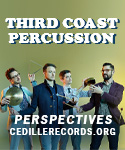Although Artur Schnabel looked upon his composing as a hobby apart from his “day job” as one of the 20th century’s most respected pianists, many of his works are serious in scale and purpose, such as his five-movement Sonata for Solo Violin. Completed during the summer of 1919, the work lasts around 45 minutes and fills more than 40 pages, with not one barline in sight. Carl Flesch, who premiered the sonata, included its third movement as part of the supplement to the second volume of his treatise The Art of Violin Playing. However, the sonata in full languished in oblivion until the late Paul Zukofsky made its premiere recording the mid-1980s. A second recording appeared around 15 years later from Christian Tetzlaff, and now (2019) we have a third, this time by William Harvey.
Reviewing the Tetzlaff disc, I wrote that Schnabel’s harmonic and melodic thinking occupies that murky limbo where tonality and atonality cancel each other out. To my older ears, however, this is more fascinating rather than bothersome. I still feel that Schnabel’s inventive powers flag during the lengthy third and fifth movements, which seem to go on too long for what the music has to express. Still, there are wonderful moments, like the second-movement Scherzo’s fast, snaky scales and its wacky main theme in double stops that sounds like Richard Strauss gone terribly wrong. I love the third movement’s somber opening, with its juxtaposition of stark, questioning phrases and pizzicato chords. And some of the first movement’s discursive detours grab your attention, such as the rapid passages in dotted rhythms that one might describe as the finale of Beethoven’s Kreutzer Sonata time traveling into the future toward Michael Tippett’s composing table.
Schnabel’s thorny violin writing tests a thinking virtuoso’s full powers, and William Harvey is unquestionably up to the task. He sustains interest in the odd-numbered movements by putting foreground and background material in cogent perspective. He also plows through the padding, so to speak, consequently minimizing the music’s rambling tendencies. While Zukofsky and Tetzlaff are suppler and edgier in the briefer second and fourth movements, Harvey’s slower tempos let him give more shape to inner melodies and allow him to differentiate the contrasting themes’ moods.
What an inspired idea for Harvey to pair the Schnabel sonata with Schubert’s C major Fantasie, perhaps the most underappreciated of this composer’s great late works. It also happens to be quite lucky on disc, boasting many excellent recordings, including this one. In the opening section’s long sustained lines, Harvey doles out vibrato with both discretion and variety, words that also apply to Frederic Chiu’s handling of the piano part’s murmuring tremolos. The musicians play the fast, technically demanding sections effortlessly, with seamless and finely calibrated ensemble synchronicity. Surely Harvey and Chiu yield no quarter to Koh/Uchida (Cedille), Rohn/Chernyavska (Claves), and Fischer/Helmchen (Pentatone), among more recent memorable versions. My only quibble is that Centaur doesn’t demarcate the Fantasie’s sections with separate tracks. A distinctive release.
































